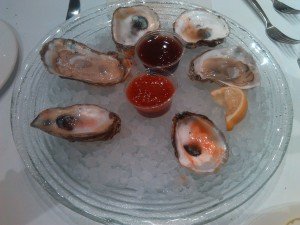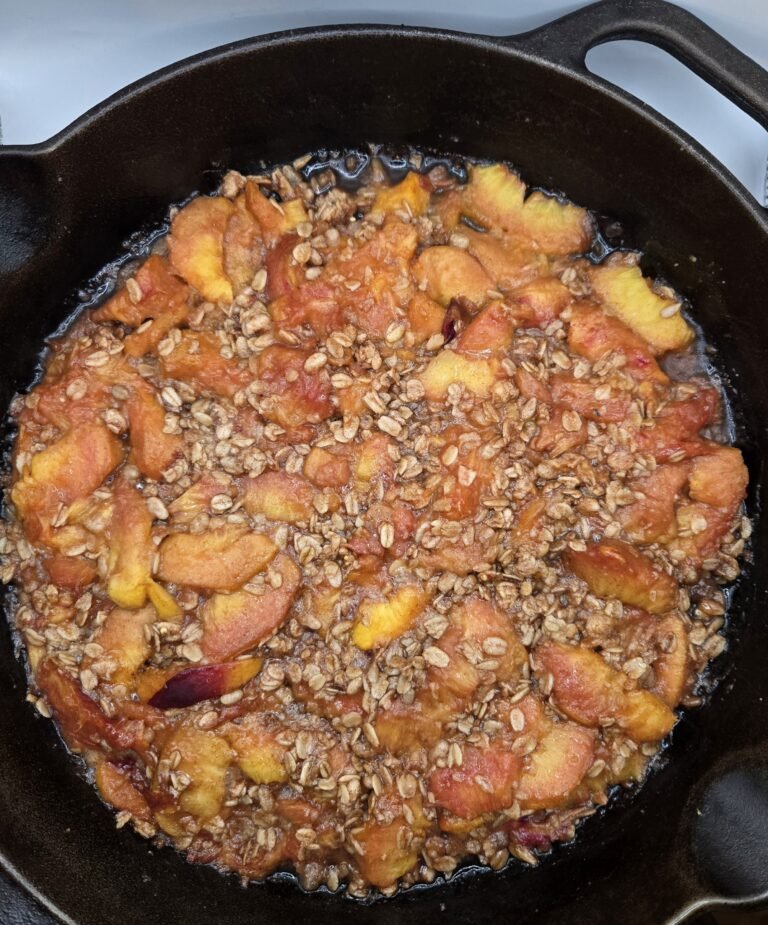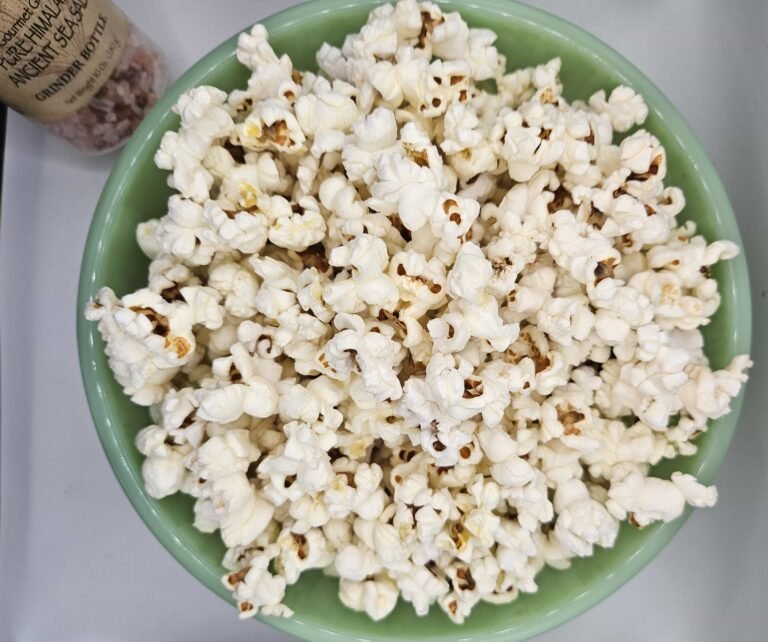
When I first heard about eating raw oysters in college, someone told me that you’re supposed to swallow them whole. It seemed kind of pointless to me to eat them because if you’re not going to chew it, taste it, or enjoy it, you’re just giving your stomach an overtime assignment by bypassing the first part of the digestive system. Recently I went to lunch with a co-worker and he ordered raw oysters and told me to try some and to chew it and notice the different flavors between the different types of oysters.
We were at the Grilled Oyster in Potomac, MD. The types of oysters by location available were: Chesapeake and Chesapeake Gold (MD), Battle Creek and War Shore (VA), Blue Point (CT), and Wellfleet (MA).
Oysters are low in mercury and best from cold waters (or cooked) for people sensitive to food-borne illness. Obviously they are high in protein, omega-3s, and iron (8 times more than chicken), but are also high in calcium, B12, copper, and zinc (50 times more than chicken).[1] They are low in calories and have been shown (along with clams, mussels, and crab) to increase good cholesterol levels (HDL) and lower bad cholesterol levels (LDL).[2]
Many restaurants that serve oysters are part of the oyster recovery project, which recycles oyster shells by using them to create reefs in Chesapeake Bay with their Shell Recycling Alliance. Collected used oyster shells are planted into new bay reefs with baby oysters attached (featured on CNN’s Somebody’s Gotta Do It with Mike Rowe). Each recycled shell can return ten new oysters to the bay, and the reefs clean our waters and provide habitat for other marine life such as striped bass and blue crabs.
There are over 250 business members in Delaware, Maryland, Virginia, and D.C alone taking part in shell recycling. Fifteen other states have Oyster Restoration efforts across the nation. Some states offer tax credits for recycling shells and ban putting oyster shells in dumpsters because of their shortage. Visit the website for your state to find out where to recycle shells.
[1] “Nutritional and Healthy Facts About Shellfish Oysters,” May 2010. www.shellfish.org.uk/
[2] “Effects of shellfish consumption on lipoproteins in normolipidemic men,” MT Childs, CS Dorsett, IB King, JG Ostrander, WK Yamanaka; The American Society for Clinical Nutrition, June 1990, 51:6 1020-1027.




